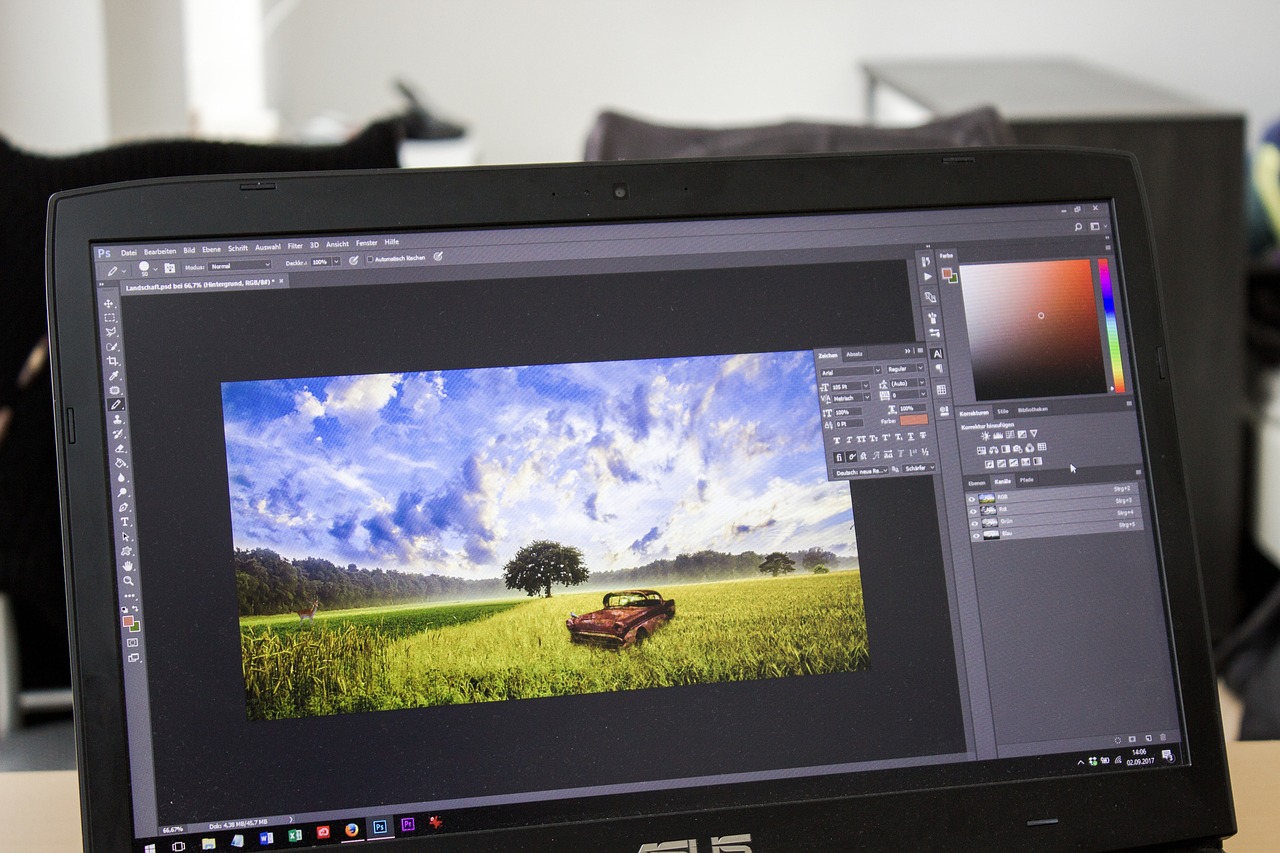In the world of digital photography, choosing the right photo editing software can significantly impact the quality of your work. Adobe Photoshop, Lightroom, and GIMP are three of the most popular options available, each offering unique features and capabilities. Whether you are a professional photographer or a hobbyist, understanding the strengths and weaknesses of each software is essential to making an informed decision. In this comprehensive comparison, we’ll explore the functionalities, user experience, and overall value of Adobe Photoshop, Lightroom, and GIMP.
Overview of the Software
Adobe Photoshop
Adobe Photoshop is the industry standard for photo editing and graphic design. Known for its extensive features and capabilities, Photoshop allows users to manipulate images with incredible precision. From simple adjustments to complex composites, Photoshop offers tools for virtually every aspect of photo editing and design.
Lightroom
Adobe Lightroom, also part of the Adobe Creative Cloud, is tailored for photographers. It offers powerful editing tools while focusing on workflow efficiency and organization. Lightroom is ideal for managing large photo libraries, making batch edits, and performing non-destructive edits that preserve the original image data.
GIMP
GIMP (GNU Image Manipulation Program) is a free and open-source photo editing software. It provides a wide range of editing tools and is often compared to Photoshop in terms of functionality. GIMP is a powerful option for those who seek advanced editing capabilities without the cost of a subscription.
Key Features and Capabilities
Adobe Photoshop
- Layer-Based Editing: Photoshop’s layer-based approach allows users to work on different parts of an image independently, offering unparalleled flexibility and control.
- Advanced Selection Tools: Photoshop excels in making precise selections with tools like the Magic Wand, Lasso, and Select and Mask.
- Retouching and Restoration: Powerful retouching tools, such as the Healing Brush and Clone Stamp, make it easy to remove imperfections and restore old photos.
- 3D and Graphic Design: Beyond photo editing, Photoshop offers tools for 3D design, typography, and vector graphics, making it a versatile choice for various creative projects.
Lightroom
- Non-Destructive Editing: Lightroom’s non-destructive editing ensures that the original image remains intact, allowing for reversible changes.
- Presets and Profiles: Lightroom offers a wide range of presets and profiles to quickly apply different looks and styles to photos.
- Organizational Tools: Powerful organizational features, such as keyword tagging, collections, and smart albums, help manage large photo libraries efficiently.
- Batch Editing: Lightroom excels in batch processing, allowing users to apply edits to multiple photos simultaneously, saving time and effort.
GIMP
- Customizable Interface: GIMP’s interface is highly customizable, allowing users to arrange tools and panels to suit their workflow.
- Extensive Plugin Support: GIMP supports a wide range of plugins and scripts, enhancing its functionality and offering additional tools for specific tasks.
- Advanced Editing Tools: Similar to Photoshop, GIMP provides advanced selection, retouching, and color correction tools.
- Free and Open Source: As an open-source software, GIMP is free to use and continuously updated by a community of developers, making it an accessible option for all users.
User Experience and Learning Curve
Adobe Photoshop
Photoshop has a steep learning curve, particularly for beginners. Its extensive toolset and numerous features can be overwhelming at first. However, Adobe offers comprehensive tutorials and resources to help users get started. Once mastered, Photoshop’s capabilities are unmatched, making it a favorite among professionals.
Lightroom
Lightroom is more user-friendly compared to Photoshop. Its interface is designed with photographers in mind, providing a streamlined workflow for editing and organizing photos. The learning curve is gentler, making it accessible to both beginners and experienced photographers. Lightroom’s intuitive layout and non-destructive editing make it a popular choice for photo editing.
GIMP
GIMP’s learning curve is moderate, similar to Photoshop. As an open-source program, it lacks the extensive official tutorials provided by Adobe. However, there are numerous community-created resources and tutorials available online. GIMP’s customizable interface can be tailored to individual preferences, but it may take some time to get used to its unique setup.
Performance and System Requirements
Adobe Photoshop
Photoshop is a resource-intensive program that requires a powerful computer to run smoothly. It performs best on systems with high RAM, a dedicated graphics card, and a fast processor. Regular updates from Adobe ensure compatibility with the latest hardware and operating systems.
Lightroom
Lightroom is less demanding on system resources compared to Photoshop. It performs well on a variety of systems, but benefits from higher RAM and faster storage, especially when managing large photo libraries. Lightroom Classic, the desktop version, and Lightroom CC, the cloud-based version, cater to different user needs and preferences.
GIMP
GIMP is lightweight and performs well on most systems, even those with lower specifications. Its open-source nature allows it to run on various operating systems, including Windows, macOS, and Linux. GIMP’s performance is generally smooth, but complex tasks and large files may require more powerful hardware.
Pricing and Value
Adobe Photoshop
Photoshop is available through an Adobe Creative Cloud subscription, which can be costly. The Photography Plan, which includes both Photoshop and Lightroom, starts at $9.99 per month. While the subscription model ensures access to the latest updates and features, it may not be ideal for users on a tight budget.
Lightroom
Lightroom is also part of the Adobe Creative Cloud and is available through the same Photography Plan as Photoshop. The cloud-based Lightroom CC is available as a standalone app or bundled with additional storage options. The subscription model offers value through continuous updates and cloud storage but requires ongoing payments.
GIMP
GIMP is entirely free and open-source, making it the most cost-effective option. Users have access to all features without any subscription fees. While it may lack some of the advanced capabilities of Photoshop and Lightroom, GIMP provides excellent value for users seeking powerful photo editing tools without the financial commitment.
Conclusion
Choosing the right photo editing software depends on your specific needs, experience level, and budget. Adobe Photoshop offers unparalleled features and precision for professional photo editing and graphic design, making it worth the investment for many users. Lightroom provides a user-friendly experience with powerful organizational tools, ideal for photographers managing large libraries. GIMP stands out as a free and versatile alternative, suitable for those seeking robust editing capabilities without the cost.
By understanding the strengths and weaknesses of Adobe Photoshop, Lightroom, and GIMP, you can make an informed decision that best suits your creative workflow and budget. Whether you are enhancing your photography, creating stunning graphics, or simply exploring the world of digital art, there is a photo editing software out there that will meet your needs and help you achieve your artistic vision.




